My Citroen BX 16Valve has been taking a little rest of late. The car has developed a growing leak from somewhere in the front, and long work days have meant a lack of time to investigate. Recently the weather has been rather warm, so the air con in the Freelander has been rather tempting. However, it is just 11 days until Festival of the Unexceptional 2022, so I need to investigate the front-end leak. But when I come to move the car, disaster strikes in the form of a massive fuel leak.
The wrong day for a fuel leak
Although the weather in the UK is hitting a record-breaking 40c, this is the only day I have to look at the car. I expect the battery charge to be low, so I’m pleasantly surprised when the car starts the first time. I only need to move it around the drive, so the burning hot leather should be tolerable. However, I don’t get the chance to raise the suspension, as the engine stalls within seconds.
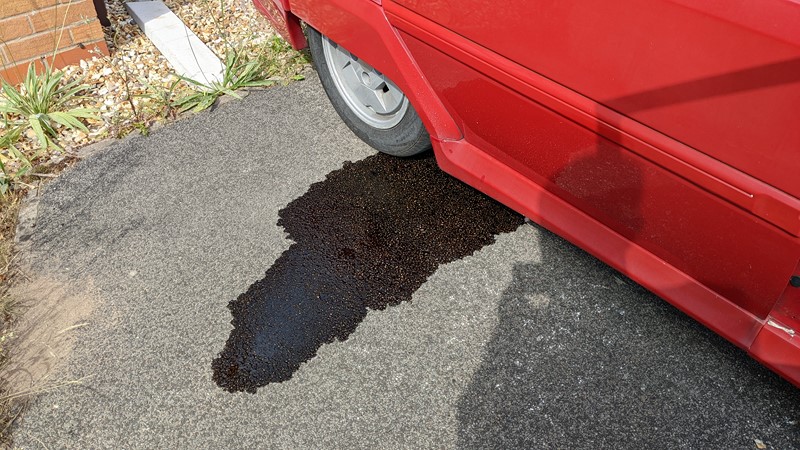
A strong odour passes by, which instantly has me concerned. It’s not immediately apparent as a petrol smell, certainly oily. Getting out of the car and it doesn’t take too long to find the cause of the smell. A significant fluid leak. The mystery fluid doesn’t really smell like petrol, and it appears to be brown. I’m completely lost as to what it can be.
Where is it leaking from?
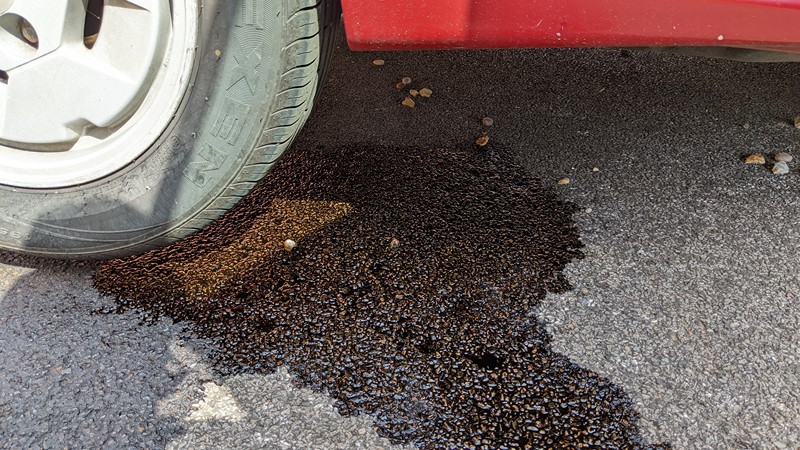
Moving the car forward and cranking over again, a second puddle instantly forms. This time the engine doesn’t start, so it’s unlikely to be hydraulic fluid. The taste test doesn’t answer the question of what the fluid is, although I’m happy it’s not hydraulic fluid or anti-freeze. Surely it must be a fuel leak?
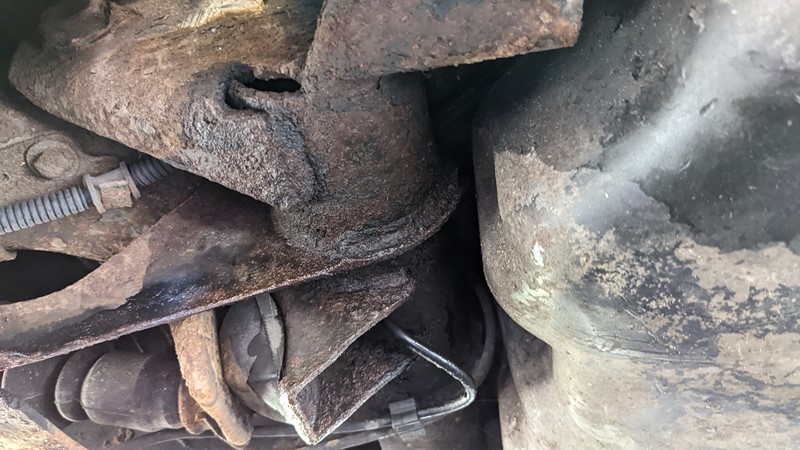
A dip test using a piece of white tissue reveals a brown liquid. But what is pouring off the subframe is clear. And after a few minutes, the mystery fluid starts to smell like bitumen. I can only assume that because the weather is so hot, the Shell V-Power is melting the bitumen within the tarmac. The fuel leak is actually melting the drive, which is why it smells so odd. I suspect that the 40c weather isn’t helping!
Finding the cause of the leak
There is no chance of tackling the fuel leak in 40c temperatures. I’m basically ginger, and even a bright flood light will burn my skin. However, after a long week at work, I finally get a break long enough to start tackling the fuel leak. It’s now T-Minus 6 days until FotU. If I can’t get this fixed today, I won’t be going!
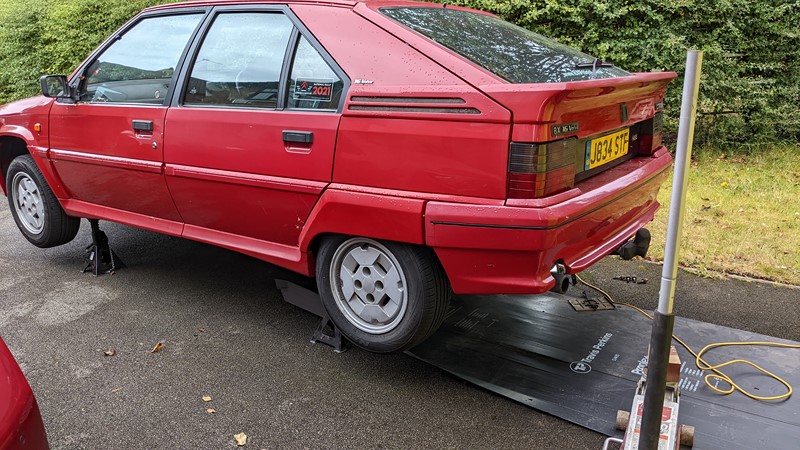
With the XPO project blocking the scissor lift, I’ll have to tackle this job on the drive. The Arcan trolley jack from Costco and Halfords axle stands make short work of getting the car into the air. The Travis Perkins Proplex sheet came with a material order for the mega shed, but it is fantastic for lying on under a vehicle on a tarmac drive.
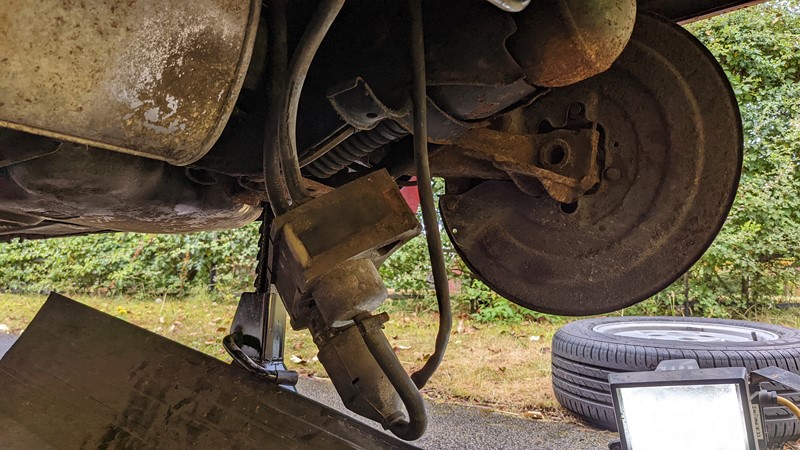
With the car suspended, I can check over the fuel pump, filter and pipes. These were all suggested by the members of the BX Club Facebook group. However, there is no sign of a fuel leak. Routing around on top of the subframe confirmed the fuel pulsation damper was no longer connected. Eventually, I found the cause of the problem.
More evident than I expected!
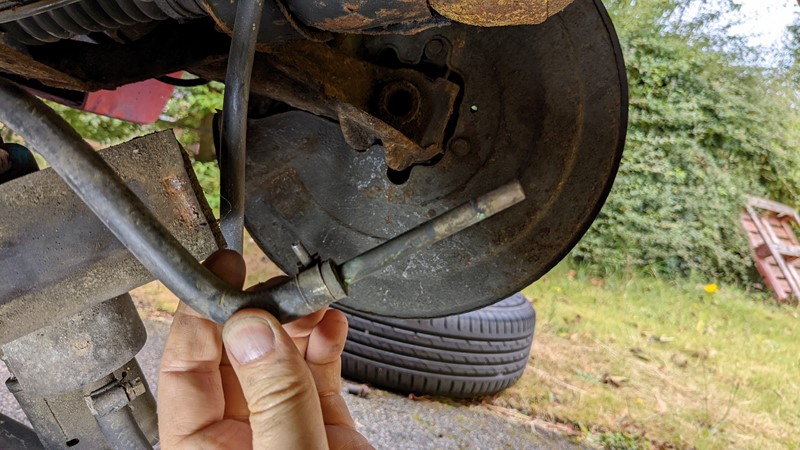
This short length of copper pipe has clearly been used to bypass the fuel pulsation damper. And it isn’t flared! I suspect the very hot weather has caused the rubber pipes to go soft and slip off under pressure. I don’t remember fitting this bypass, but I’ve had this car so long that a young me may have installed it. I’m just very, very glad this fuel leak didn’t happen while driving!
Fuel pulsation damper
The fuel pulsation damper is installed after the fuel pump to even out the pressure surges of fuel as the pump turns. I always thought it was there to protect the hard fuel lines that run under the car. However, I’ve learned that some Citroens, like the XM, have this damper in the engine bay. I can confirm that an awful lot of BX 16Valves no longer have a fuel pulsation damper.

Installed on top of the subframe, the fuel pulsation damper sits almost continuously in a puddle. The part only has very thin walls, and in no time at all, they rust out. Given where they live, replacement is a complex and tedious job, so they are often simply bypassed when a fuel leak develops.
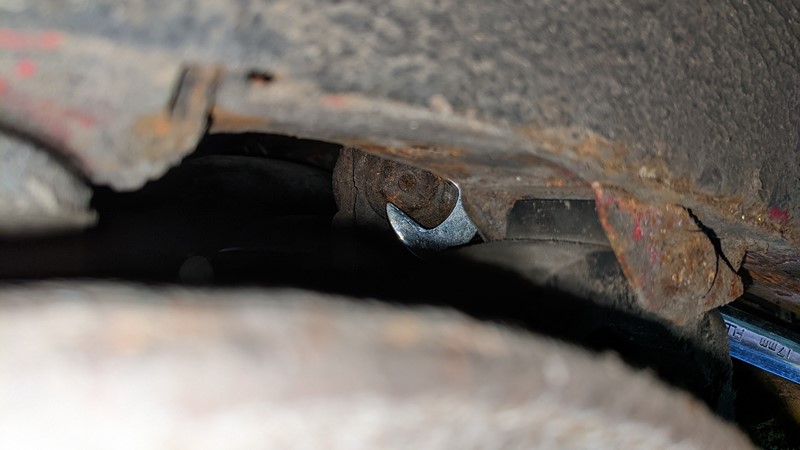
The fuel pulsation damper is held in place by a single nut that is near impossible to remove. Officially, the rear subframe should be dropped for access. However, with a bit of perseverance, I can just about manage to reach the fixing and get it undone.
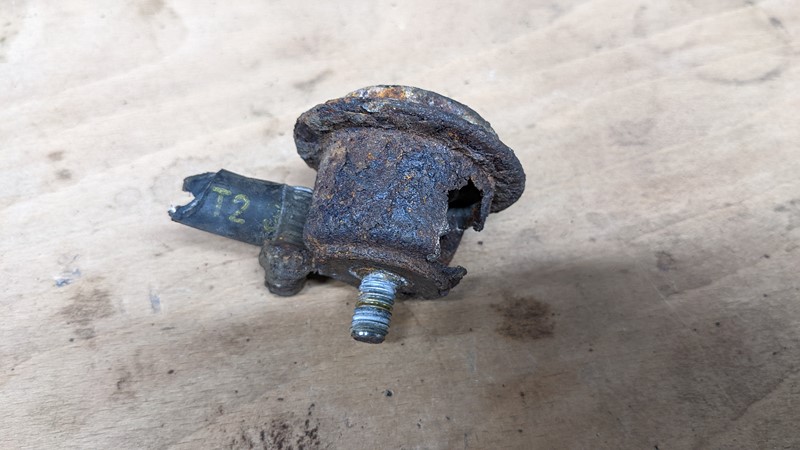
Yeah, this is a car part that is definitely past its best. The giant gaping hole on the right of the picture should have the outlet pipe attached, which is nowhere to be seen. The diaphragm that does the damping of the fuel pressure has long since gone on a permanent holiday. This fuel pressure damper is deceased.
Drawing in a new Gates Barricade fuel hose
While I’m tackling the fuel leak, I might as well change the fuel hoses. The flexible pipes here are all thirty-something years old. Like me, they are inflexible, cracked, perished and balding. There have been so many cases of classics burning out over the last few years. Now is the right time to do something about these old hoses.
Dragging out the old fuel hose
The main concern hose, the one that fell off the bypass, is the supply to the engine. Usually under high pressure, and proven by the fuel leak, it allows a lot of fuel out of the tank in a very short space of time.
To hopefully preserve the life of this Citroen BX and avoid any further fuel leaks, I’ll be replacing it with Gates Barricade hose.

The pipe from the fuel pump to the front to rear hard lines is less than 50cm long. I’m optimistic that it will be straightforward to remove. But imagine my surprise when I come to pull the pipe through only to find there are not one but two fuel pipes here. Both original Citroen pipes. What on earth is going on?
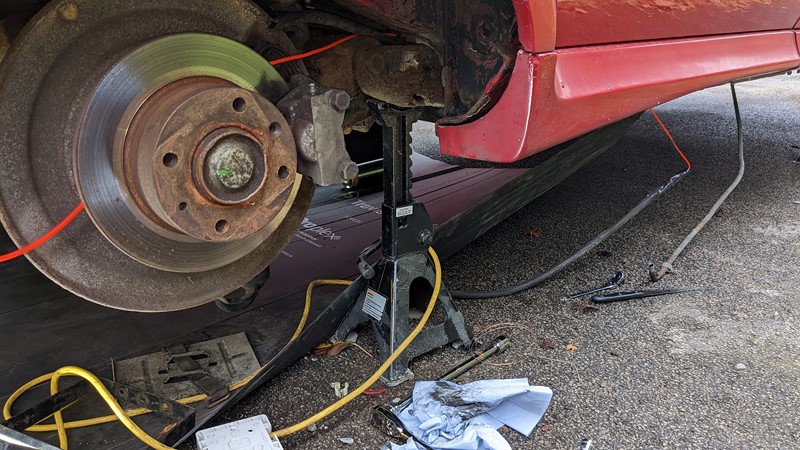
Drilling a hole through the old pipe, and tieing a length of cord on, allows me to drag a guide through as I pull the old pipe out. Dropping the rigid fuel pipe gives me access to the other end of the line, and pretty quickly, the original hose is removed.
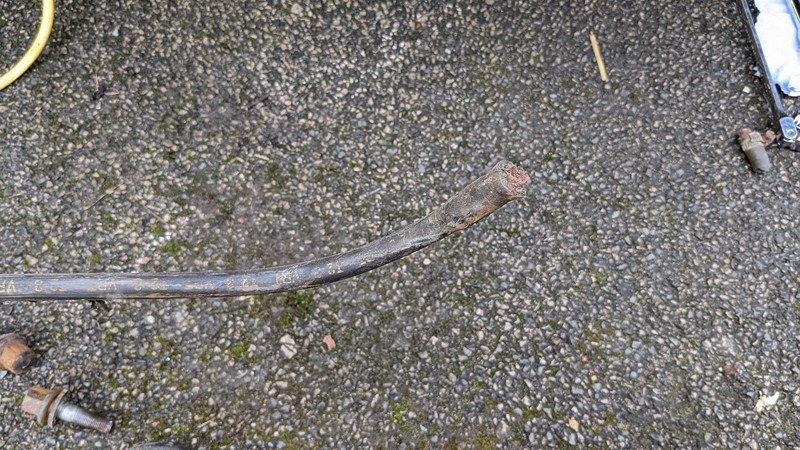
I don’t remember adding a second hose, but then my memory is certainly failing for something that would have happened twenty years ago. The second pipe still has the end of an old hard fuel line in it, so I may well have never known it was there and simply replaced what I thought was a missing pipe.
Drawing in the new fuel hose
The risks of installing the wrong fuel hose are well documented. South Ways Automotive has written about the dangers many times. Unfortunately, many motor factors still sell very cheap fuel hoses that are unsuitable for modern petrol and fail very quickly. I’ve seen major failures of the no-brand R6 fuel hose in less than three years.
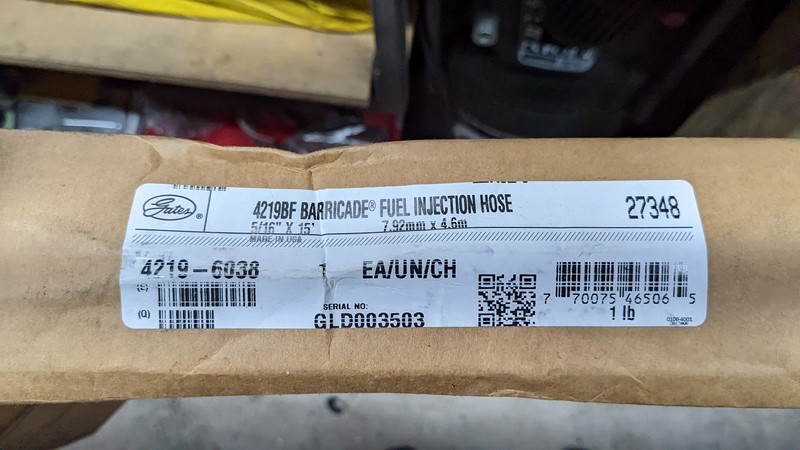
To protect any vehicles I work on, I will only now install Gates Barricade fuel injection hose. While around four times more expensive than the motor factor fuel hose, I find it to be excellent value. Certainly cheaper than the car expiring in a ball of flame. Better still, it is compatible with modern fuels.
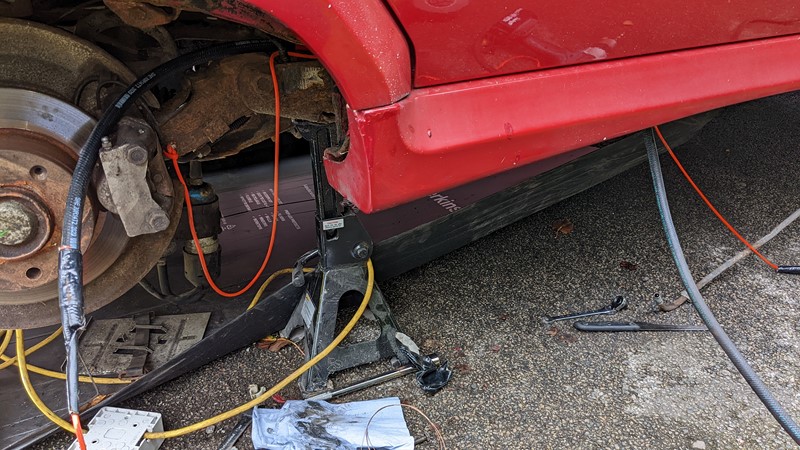
The drawstring is taped to the end of the pipe with good quality duct tape and pulled from the front of the car to the back. As it follows the path of the orange cord, the pipe is guided up over the plastic fuel tank and to where the fuel pulse damper once was.
Overhauling the fuel system
Not happy with simple solving the fuel leak, I want to go all in and overhaul the entire fuel system. Fortunately, I had all the parts in stock, having bought them during an Autodoc sale a year ago.
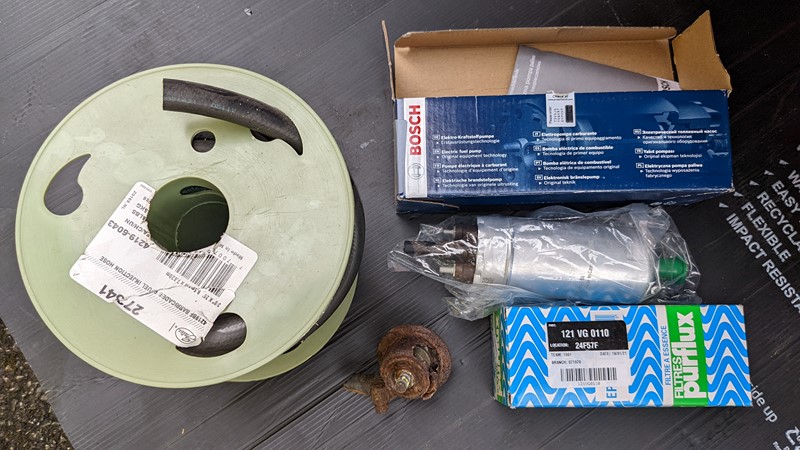
The fuel system overhaul will involve installing a brand new Bosch fuel pump, and Purflux fuel filter and replacing all the accessible pipes at the back of the car.
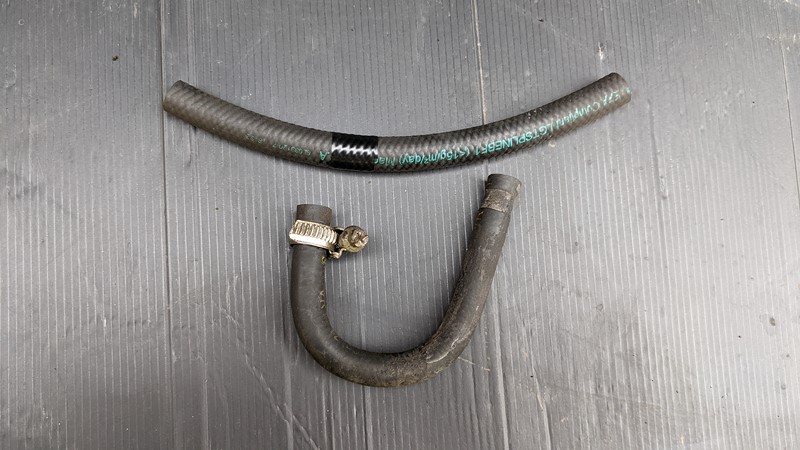
One downside to the Gates Barricade hose is that its reinforcement makes the pipe hard to bend. It also needs quite a large radius when bending, or it goes flat. The link pipe between the fuel pump and damper has quite a tight turn and requires a lot of bending. A bit of tightly wound tape on the hose helps to avoid collapsing and allows a tighter radius.
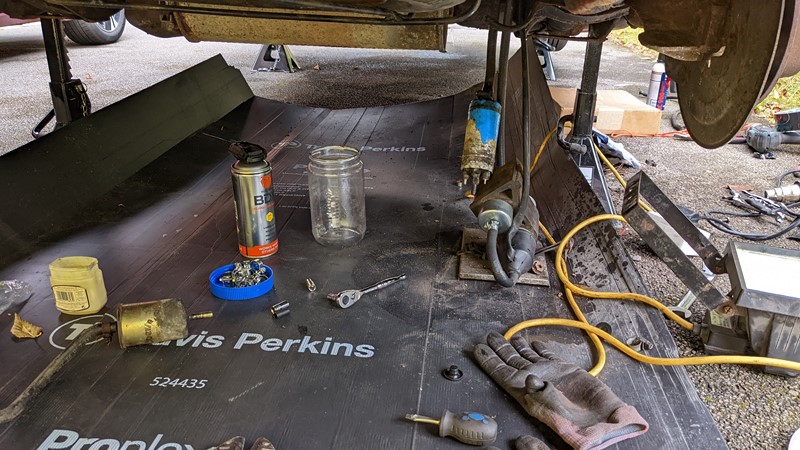
It certainly looks like I’m losing a battle at this point, but I promise I am winning and feeling quite positive about the progress. This work should mean the fuel leak is solved; hopefully, I will make it to the festival of the unexceptional. The BDX spray has been great for getting all the rusted hose clamps moving again.
Starting the Citroen BX back up
Before I get too excited and take the car off the stands, I really need to check the fuel leak is solved. I would hate to find the leak was actually somewhere else and need the car back in the air again.
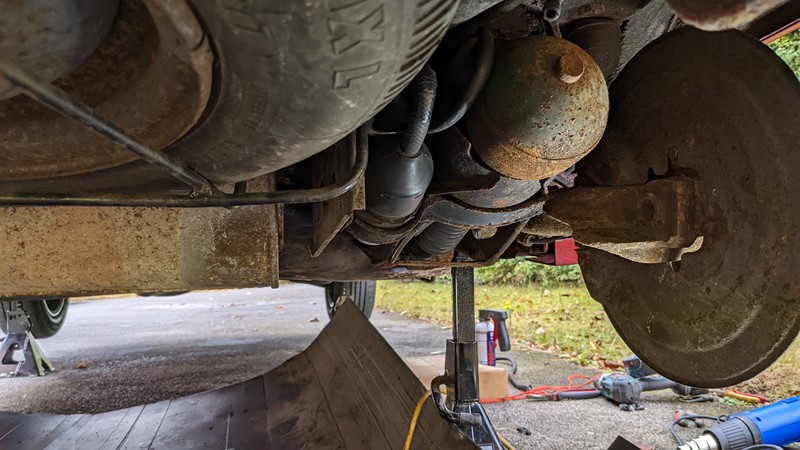
All the fuel hose clamps are checked for tightness, and the connectors to the fuel pump are cleaned and lubed. Finally, the fuel pump and filter package are reassembled and reinstalled with the heat shield. All being well, this shouldn’t have to come apart for many years.
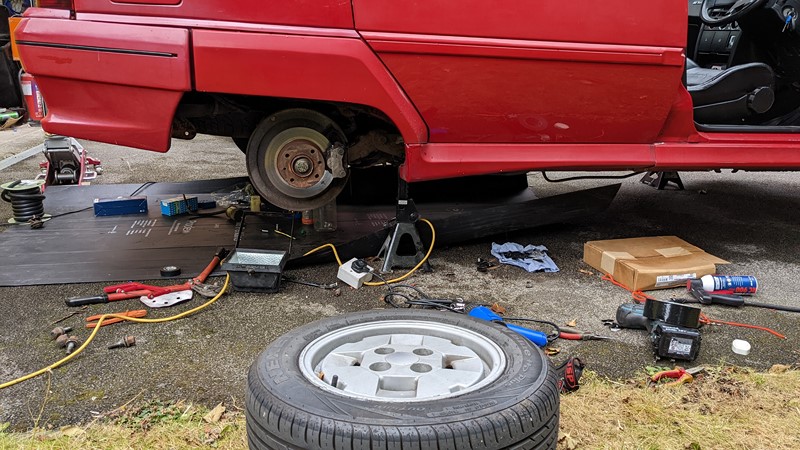
After a bit of cranking to draw the fuel through the pipes and displace the air, the Citroen BX’s MI16 engine coughs into life. It’s a shame that this Motronic system doesn’t have control for pre-priming the fuel pump. I wouldn’t usually work this messy, but this is clearly a sign of desperation to get to FotU.
The fuel leak is resolved, and the car is road tested.
After a bit of a clean-up of tools, I can finally take the car off the stands. I’m wary that I still haven’t checked the cause of the leak at the front of the car, but right now, I need to know if it will even drive!
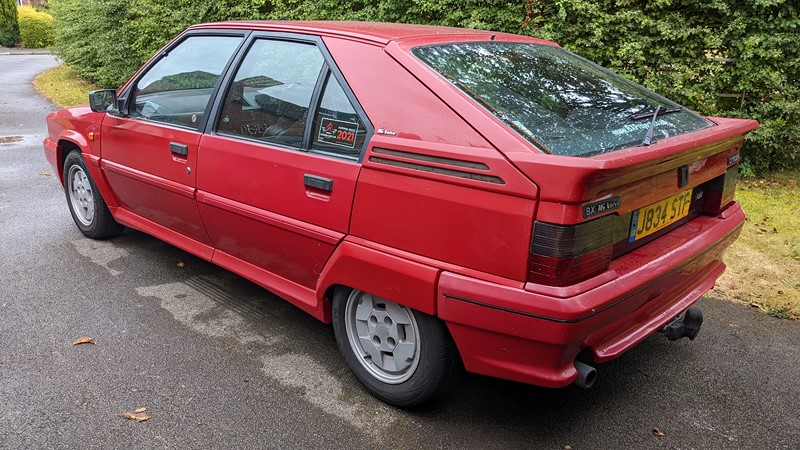
A quick road test confirms I have full power, and the engine is running as beautiful as ever. Better still, with the car back on the drive, there is no longer any fuel leak at the back of the vehicle. Job done.
I’m so glad I’ve resolved the fuel leak and that the weather has cooled off. But I still have work to do before the Festival of the Unexceptional. Before I tackle the front-end leak, I’ve got another long week at work, and I won’t even be in the country!
M
NEXT – Citroen BX – FotU Prep – More Leaks
PREV – Citroen BX – How To – Door Pillar Repair
Back to Citroen articles
Back to Automotive articles
Amazon Affiliate Links – Things used in this article
BXProject is using Amazon Affiliate Links. It’s a quick way to show you what I have used in this article.
“As an Amazon Associate, I [may] earn from qualifying purchases.”
Since January 2024, Amazon has blocked embedding images, but I think the links are still valuable.

Good spot and as you say luckily found now. I has a similar issue with one of the Commers, although it was on the suction side of the Facet pump I fitted years ago, and yes it was ethanol incompatible hose. All sorted now.
I also made sure Ted the traveller’s fuel system was ethanol safe from tank to engine during the resto.
looking forward to your FOTU report
Cheers for the positive feedback as ever Panky. I still want to see this Commer. The FOTU report is underway, but the fuel leak wasn’t the only pre-FotU disaster to befall the car. I’d best get writing! M